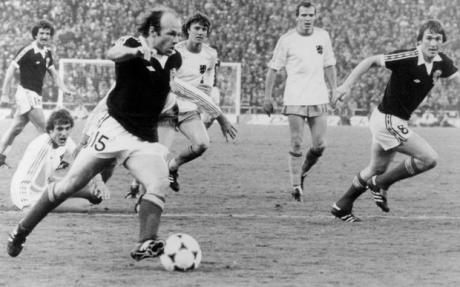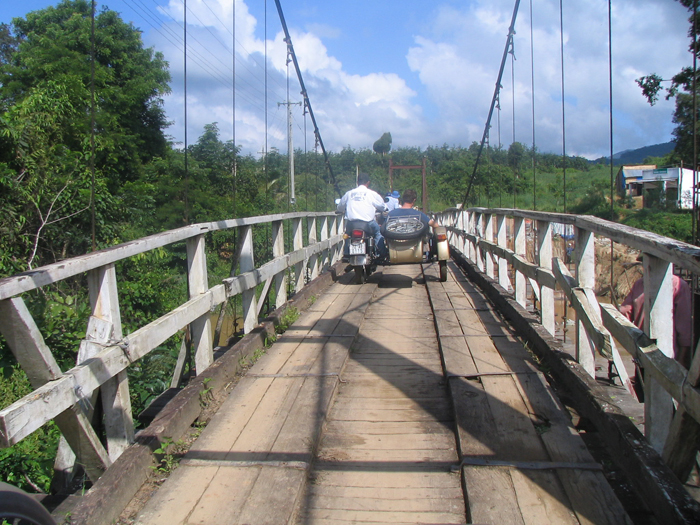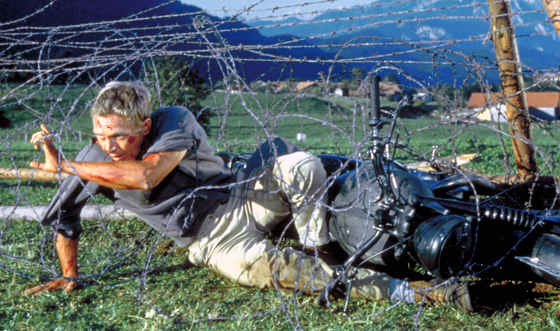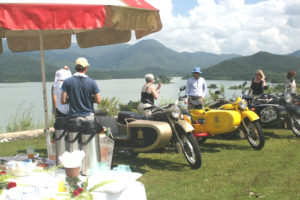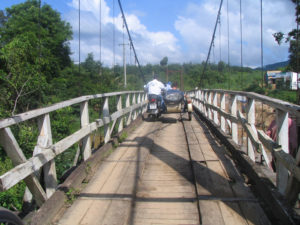Like the Olympic Games, the World Cup comes round but once every four years. Unlike the modern Olympiad, the World Cup has only recently attracted the exhaustive attention of television programmers, a fact driven home to me by my friend and colleague, Dieter Schmidt, in his debut column at halphillips.net. There was indeed no international soccer on U.S. television in the early 1970s (before Dee got a bit too stoned and spent the next 32 years frozen in a northern Manitoba trash heap). Indeed, the World Cup final — the most watched sporting event the world over — was not televised live in America until 1982, and each game of the tournament was not available on TV until ESPN undertook the task for the 1994 games, staged here in the U.S.
The United States’ thrilling last-minute victory over Algeria on Wednesday was testament to the overwhelming power of the shared televised sports experience. My fellow podcaster Tom Wadlington and I watched at DiMillo’s Bayside, a nice little sports bar in Portland, Maine. It’s not every day that two strangers leap into my arms while screaming with unbridled joy, as happened when Donovan buried the winner. It’s the latest in a series of World Cup TV Memories that I will take with me always.
I have fairly visual, broadcast-enabled memories of each World Cup starting with 1974, some more vivid and complete than others. Catching a World Cup match pre-1994, even a final, took some real doing, some planning. Here’s the first in a two-part rundown of how I managed it.
1974: West Germany
I grew up playing for the Wellesley United Soccer Club in suburban Boston, and club wide for many years our uniforms were, for reasons unknown to me, a fairly exact copy of the German national kit at that time: white socks, black shorts, white shirt with black piping. So, we had a kinship with the Franz Beckenbauer, Paul Breitner, Gerd Muller teams of that period. One of my very first coaches, in fact, Mr. Krause, was a German national whose son, Dirk, would fling himself about the goalmouth during practice making saves and yelling “Sepp!”, in honor of the Mannschaft’s imperious, talented keeper, Sepp Maier. Even so, while I knew the Germans had won the 1974 World Cup, I didn’t see the final until 1977, when I attended the Puma All-Star Soccer Camp — run by another Teutonic type, one Hubert Vogelsinger, an Austrian national who, rumor had it, had been banned from his native soccer community (and emigrated to San Diego) after head-butting a referee during a match in Vienna. In any case, Hubie showed films every night after running us ragged all day long. He was understandably Germanophilic and it was there, in the Taft School cafeteria, in Watertown, Conn., seated beside my Wellesley roommate Mike Mooradian, that I finally saw the 1974 final, in its entirety: Holland with its kick-ass Orange uniforms; both teams with their amazingly long hair and mustaches; Holland’s 15 consecutive passes to start the game, culminating in a penalty and converted spot kick by Johann Cruyff to put the Dutch ahead 1-0 — before the Germans had even touched the ball (!); Breitner’s PK to tie the game; Bertie Vogts dogging a sub-par Cruyff the rest of the game; and the Germans’ ultimate 2-1 triumph, with Franz raising the trophy overhead two-handed. There was a great deal of slow-motion included in the game film, an effective motif for the game action but also for visceral reaction shots of these impossibly hirsute Germans, who very much looked the part of marauding Visigoths. Even three years late, it was impossibly exotic and heroic.
1978: Argentina
Just a year later, I returned to Hubie’s camp and, if I’m not mistaken, we saw the ’74 final again one night. But we also saw a highlight reel of the just-completed World Cup in Argentina. This made less of a lasting impression, maybe because we only saw snippets from the tournament. I remember Mario Kempes on a mazy run and scoring a goal in extra time. Was it the second goal in the 3-1 Argentina victory, or the third? Who knows? … I recall a hail of goals from Argentina in a 6-0 drubbing of Peru. Only much later did I learn that this was a match Peru and its Argentina-born keeper were accused of throwing, to put the host country in the final at Brazil’s expense (back then, teams qualified for the final directly from group play; confounding)… And then there is Archie Gemmel, the Scot who scored one of the great goals in British football history vs. the Dutch in some group game. Scotland won the game but didn’t advance out of the group, while Holland went to the final. Still, Gemmel’s goal was so sublime, it’s the highlight from 1978 I remember best — maybe because it remains so talked about and, thanks to the Internet, ubiquitous. Check it out on youtube. You won’t be sorry.
1982: Spain
This was a big deal, seeing the game live. I watched it with my high school girlfriend, Renée, at her parents’ house. There were breaks for advertisements, but I don’t recall that being controversial at the time. Not to me. I was American. I couldn’t yet conceive of a sporting event that didn’t accommodate such interruptions.
1986: Mexico
I watched this game at my house in Wellesley, and I have to admit that I don’t recall anything about the game or the event that was particularly memorable. Just graduated from college and spending the requisite jobless downtime at my parent’s place, no doubt I was stoned at the time.
1990: Italy
A few years ago, my friend Dave called and asked me a cryptic question.
“Remember that time I came over to your house in Watertown and we watched that World Cup game?”
Um, yeah…
“Well, what day was that?”
What do you mean, ‘what day’? It was June 1990; I don’t know the exact day…
“Oh. Okay…”
Dave, why do you want to know this?
“Well, we ordered cheeseburger subs from that place, and I’ve just realized that was the last time I ate meat.”
Well, thanks to the Internet, now it can be told. Dave last ate meat on June 25, 1990, the same day Romania eliminated Ireland on penalty kicks in the Round of 16. I remember quite a bit from that day, and that tournament. Not every group game was televised, on ESPN, but every knockout game was. For a soccer nut who was getting only the semi-finals and finals up to that point, this was Nirvana. At the time, I was 26 and working as city editor at a daily newspaper, which meant I didn’t go to work until 5 p.m. As Italy was 6 hours ahead I could get up and watch World Cup matches all day long before heading to the newsroom. Fabulous.
 One more delicious note from 1990: “That place” was The International, a fabulous pizza and sub shop that delivered — and delivered to my address with great frequency. That same day that Dave at his parting cheeseburger sub, I was in the shower and he was in the kitchen doing something when the delivery guy, Ahmed, walked in without ringing the doorbell, as was his custom. I was a regular customer; we had an understanding. With Dave looking on, Ahmed proceeds to set the food on coffee table, sit himself down in front of the television set and take a hit off the bong that was a fixture on said coffee table in that apartment. Dave, who knew nothing of our understanding, was understandably taken aback and hid in the kitchen until I emerged from the bathroom. I’ve always loved that memory, and was only too happy to add the cheeseburger sub aspect.
One more delicious note from 1990: “That place” was The International, a fabulous pizza and sub shop that delivered — and delivered to my address with great frequency. That same day that Dave at his parting cheeseburger sub, I was in the shower and he was in the kitchen doing something when the delivery guy, Ahmed, walked in without ringing the doorbell, as was his custom. I was a regular customer; we had an understanding. With Dave looking on, Ahmed proceeds to set the food on coffee table, sit himself down in front of the television set and take a hit off the bong that was a fixture on said coffee table in that apartment. Dave, who knew nothing of our understanding, was understandably taken aback and hid in the kitchen until I emerged from the bathroom. I’ve always loved that memory, and was only too happy to add the cheeseburger sub aspect.

